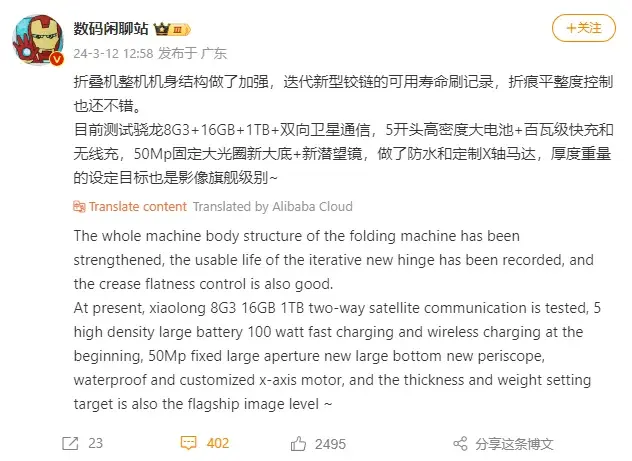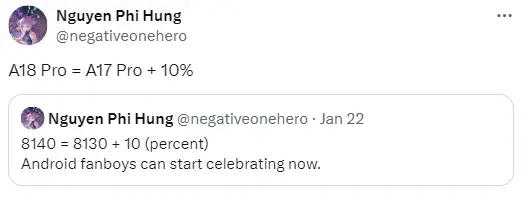Xiaomi is currently in the process of developing the Mix Fold 3 smartphone, following the introduction of the Mix Fold 3 foldable smartphone in August 2023. Recent reports have unveiled essential information about the device, including details regarding the chipset and camera setup. Now, tipster DCS has shared additional insights about the upcoming foldable device.
According to a Weibo post (via @ZionsAnvin), the Xiaomi Mix Fold 4 is expected to boast a sturdier body and hinge, enhancing its durability. This new hinge design aims to minimize creases on the folding screen. Internally, the device is set to offer 16GB of RAM and 1TB of storage, with a Snapdragon 8 Gen 3 chipset as confirmed by previous reports.
The battery capacity of the Mix Fold 4 will exceed 5000mAh and support 100W fast charging, a noticeable upgrade from the Mix Fold 3’s 4800mAh battery with 67W fast charging. Additionally, the device is anticipated to sport a 50MP main camera, a new periscope lens, alongside other camera enhancements. The previously mentioned satellite connectivity will facilitate two-way communication.
Furthermore, the Mix Fold 4 is rumored to include an IP rating, a feature absent in the Mix Fold 3. It will also incorporate a custom x-axis linear motor to enhance haptic feedback, with an expected weight ranging between 220g – 240g, possibly varying based on the back panel material used.
The last two iterations of the Mix Fold series by Xiaomi were unveiled in August, suggesting that the Mix Fold 4 might follow suit with a similar launch timeframe. As more detailed specifications are anticipated to surface in the coming days, stay tuned for further updates.

















